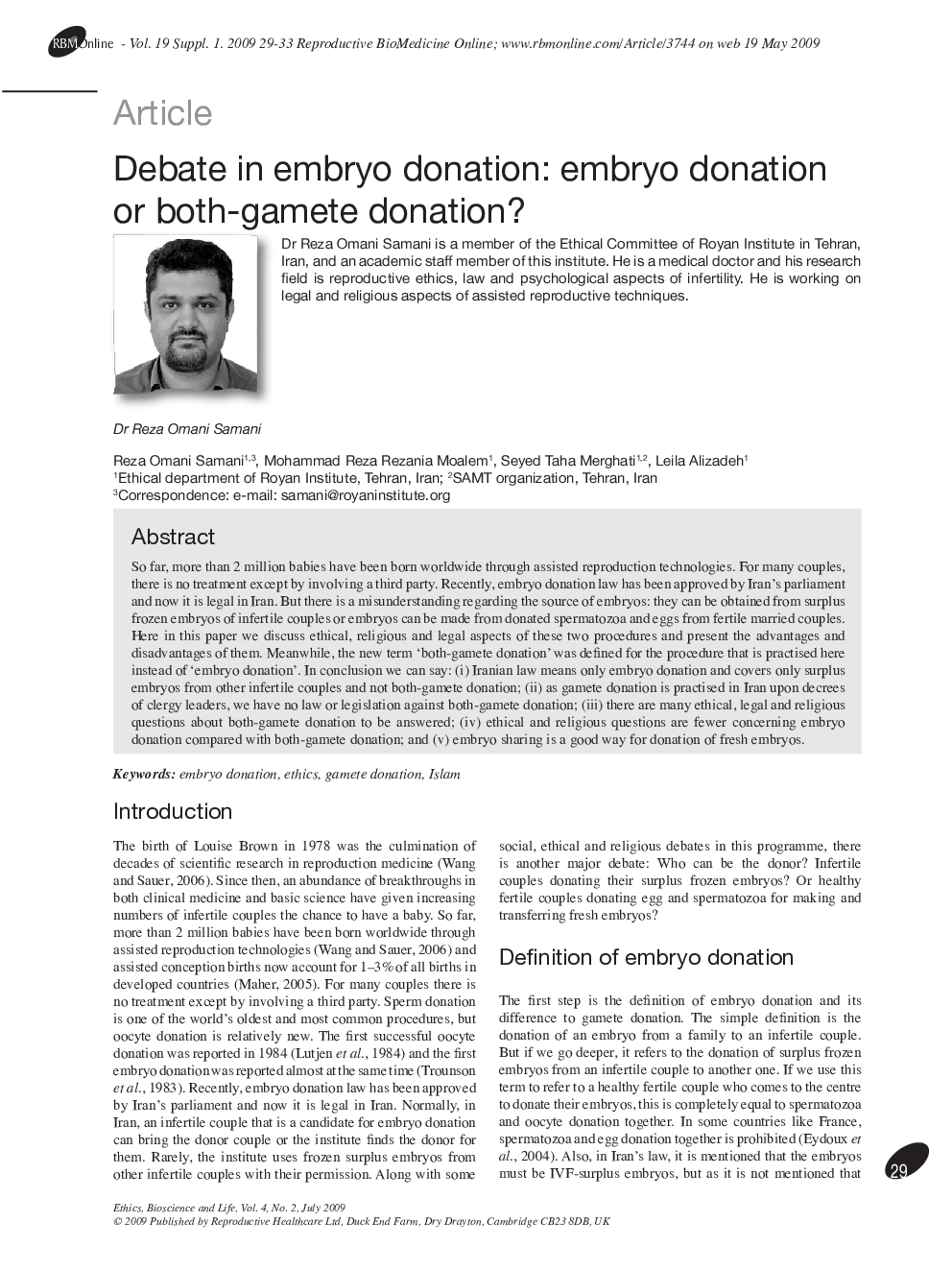| Article ID | Journal | Published Year | Pages | File Type |
|---|---|---|---|---|
| 3971193 | Reproductive BioMedicine Online | 2009 | 5 Pages |
So far, more than 2 million babies have been born worldwide through assisted reproduction technologies. For many couples, there is no treatment except by involving a third party. Recently, embryo donation law has been approved by Iran's parliament and now it is legal in Iran. But there is a misunderstanding regarding the source of embryos: they can be obtained from surplus frozen embryos of infertile couples or embryos can be made from donated spermatozoa and eggs from fertile married couples. Here in this paper we discuss ethical, religious and legal aspects of these two procedures and present the advantages and disadvantages of them. Meanwhile, the new term ‘both-gamete donation’ was defined for the procedure that is practised here instead of ‘embryo donation’. In conclusion we can say: (i) Iranian law means only embryo donation and covers only surplus embryos from other infertile couples and not both-gamete donation; (ii) as gamete donation is practised in Iran upon decrees of clergy leaders, we have no law or legislation against both-gamete donation; (iii) there are many ethical, legal and religious questions about both-gamete donation to be answered; (iv) ethical and religious questions are fewer concerning embryo donation compared with both-gamete donation; and (v) embryo sharing is a good way for donation of fresh embryos.
